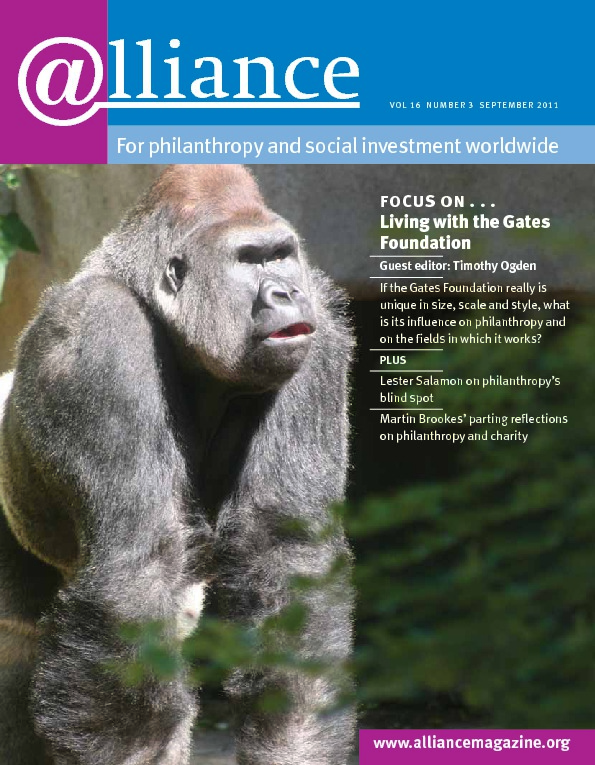The special issue of Alliance on donor collaboration (March 2011) was a bit of a shock. I expected the customary ‘happy-glad’ support for donor collaboration, but I was surprised – and pleased – by the critical analysis and insights of Barry Knight and Caroline Hartnell, who call for a sceptical but sensible approach to collaboration, and by the bold position of Richard Best who explains the Joseph Rowntree Foundation’s propensity, under his leadership, to ‘go it alone’ on most grants.
Ironically, these days business is tending towards collaboration while the social sector is tending towards competition. Each sector – ‘for-profit’ and ‘not-for-profit’ – seems to be seeking to tap the comparative advantage of the value chain of the other sector. Just look at the last few issues of Harvard Business Review. It had a pattern-disrupting cover story on ‘Creating Shared Value’ by Michael Porter and Mark Kramer in the January/February issue, while the July/August issue is called ‘Collaborate: Build a culture of trust and innovation’.
The Stanford Social Innovation Review, on the other hand, has regularly run pieces on metric evaluation, impact investment and entrepreneurship – concepts more often associated with hard-nosed business operations. Management consultants for both for-profit businesses and non-profit (or social profit) organizations – such as the work of Marilyn Darling of Signet Research on ‘emergent learning systems’ – are integrating the best practices of each sector across the spectrum to find innovative solutions to wicked problems in complex adaptive systems of all kinds – sociological, ecological, governmental and financial.
Knight and Hartnell’s sceptical but sensible approach to collaboration should be well heeded by donors who support social movements. Scholars have shown that in a comparison of social change strategy outcomes, unexpected political opportunity is often the dependant variable in movement success. Donor collaboration is especially difficult when it comes to anticipating and responding to unexpected political opportunity – particularly across cultures and complex social systems. In fact, self-empowered social movement leaders are often the only ones who can successfully anticipate crucial unexpected opportunities for their movements – that’s why they are leaders and why they have followers.
Donors acting independently – although not necessarily alone – will often achieve better results by enabling such leaders to quickly mobilize resources without waiting for collaborators to sense the same unexpected opportunity.
Chet Tchozewski
President Emeritus, Global Greengrants Fund




Comments (0)